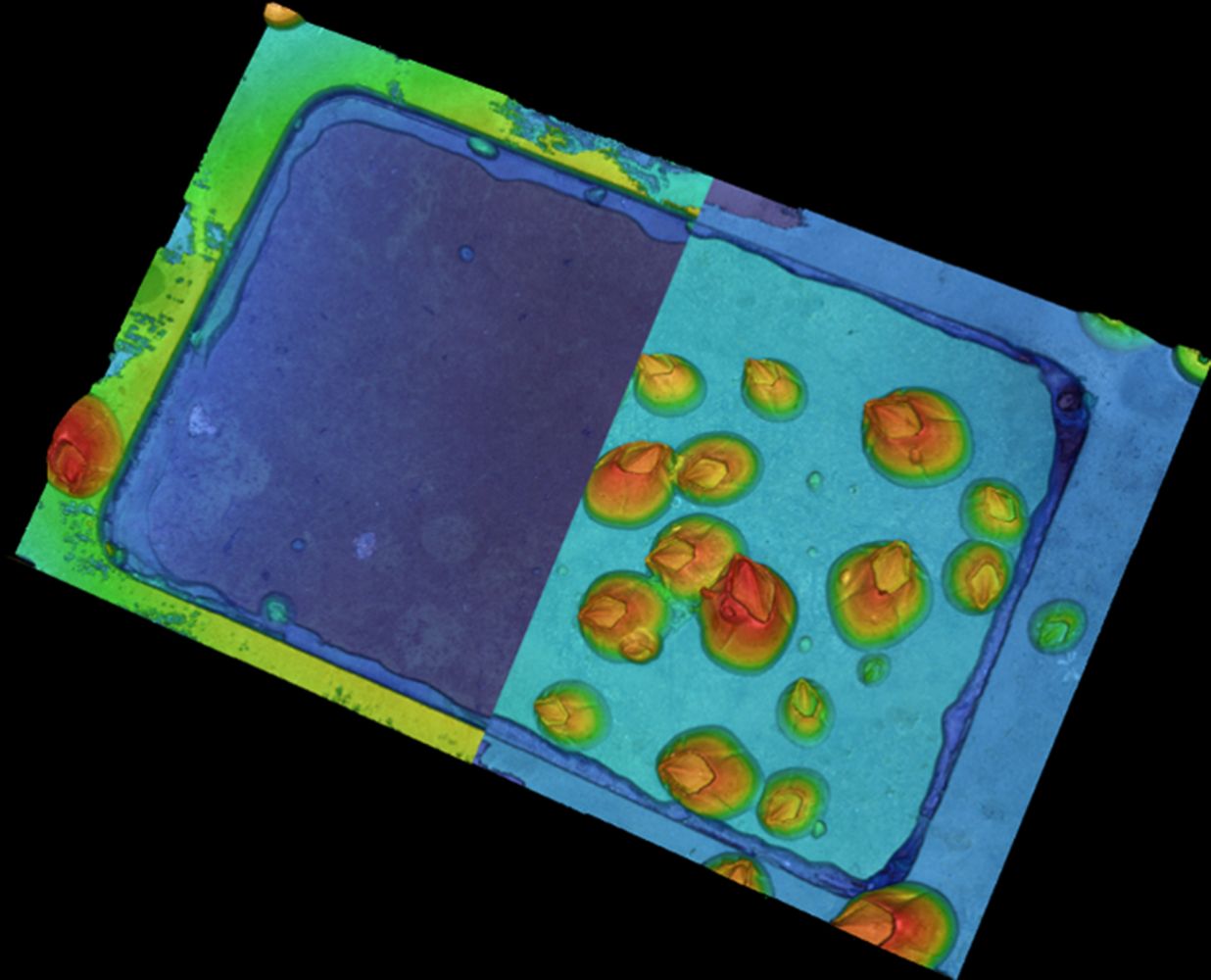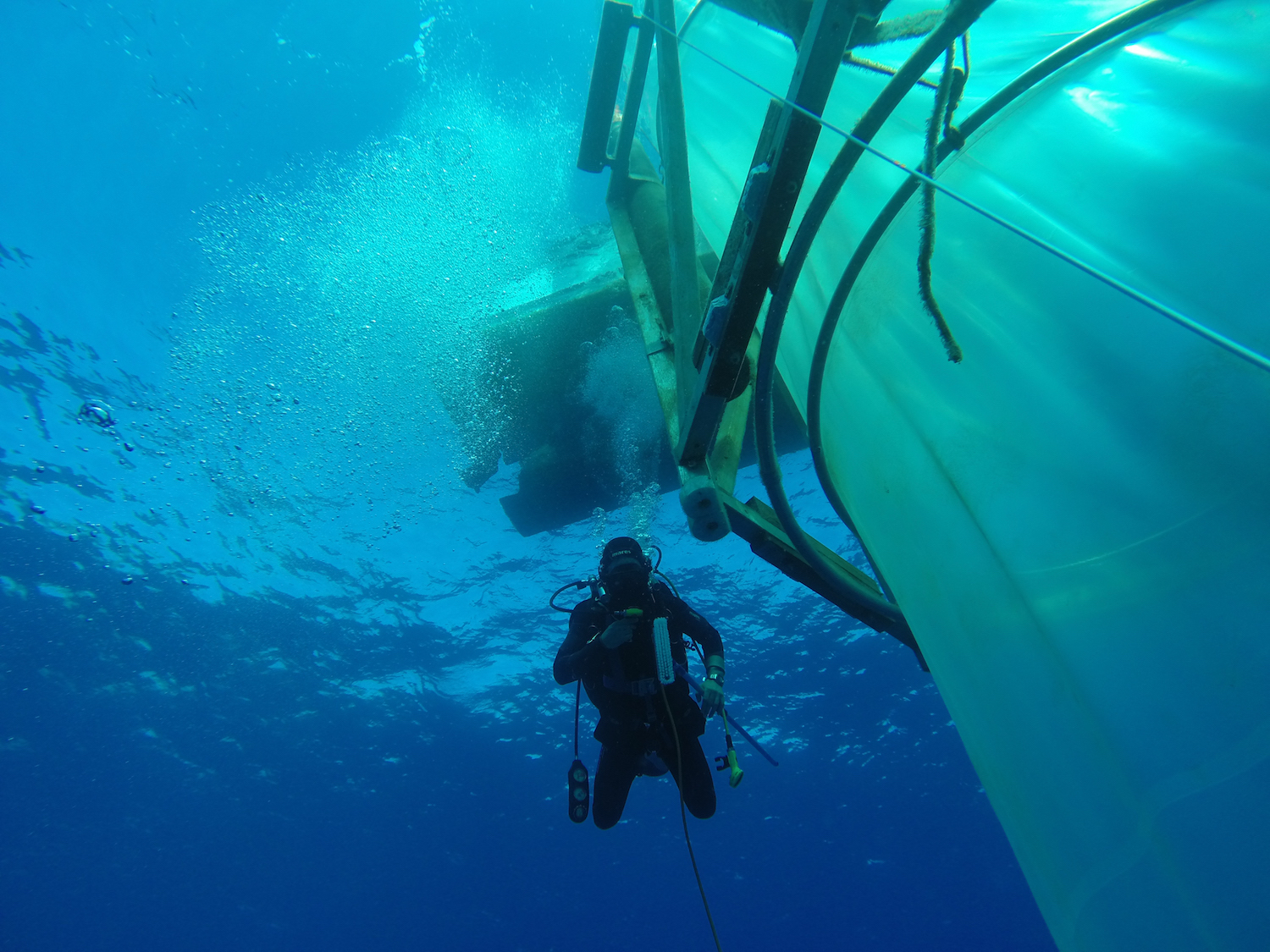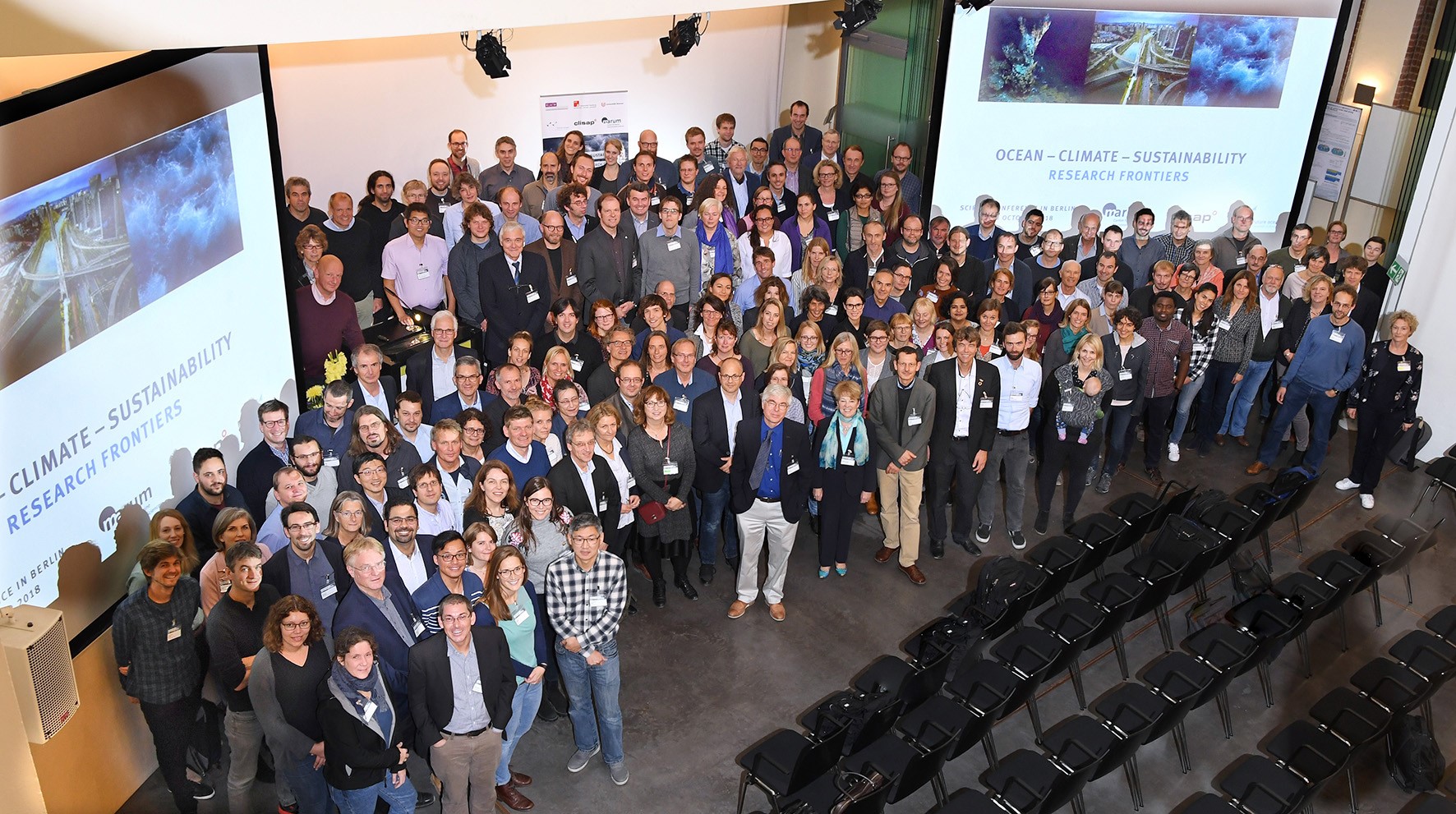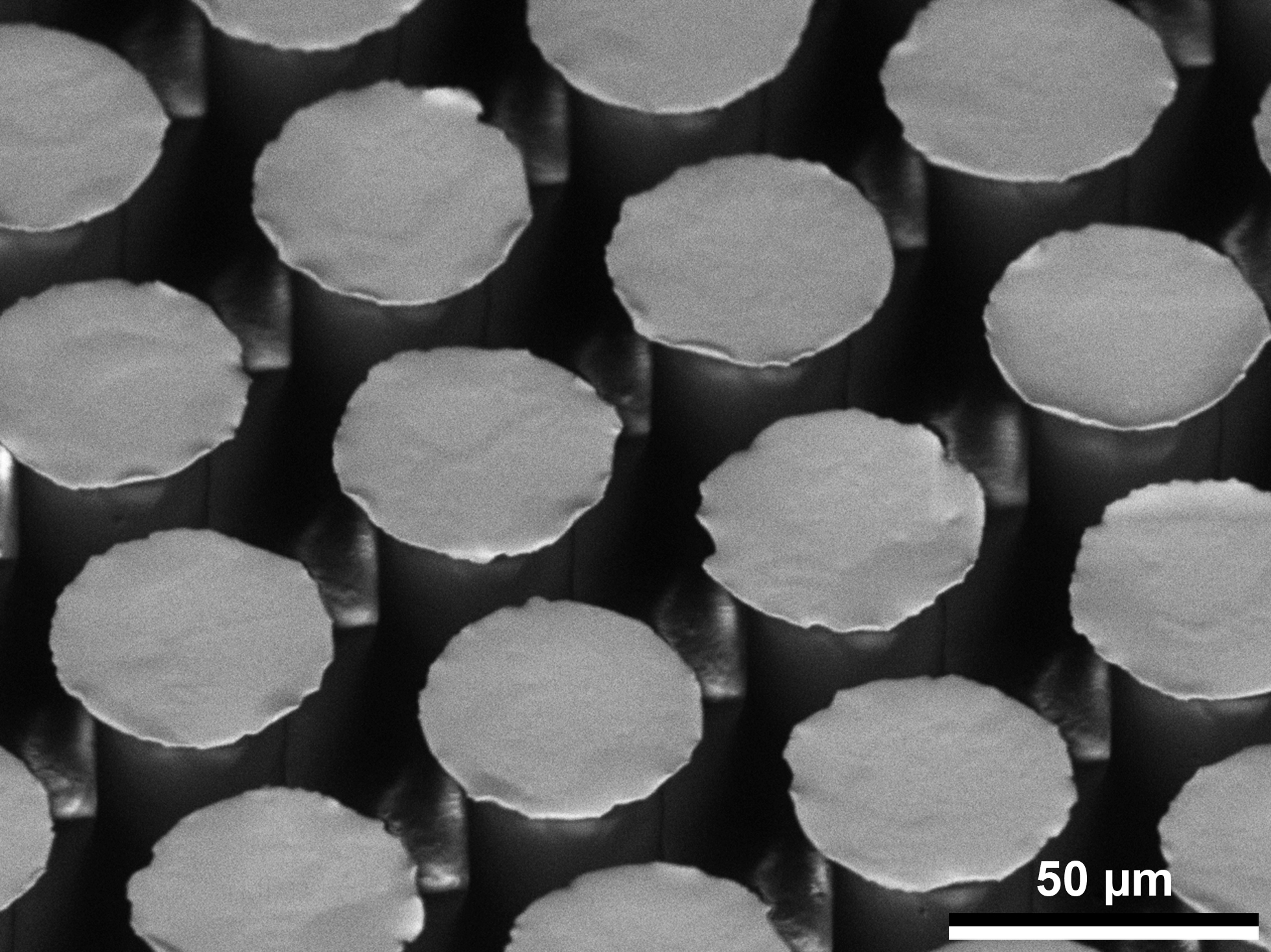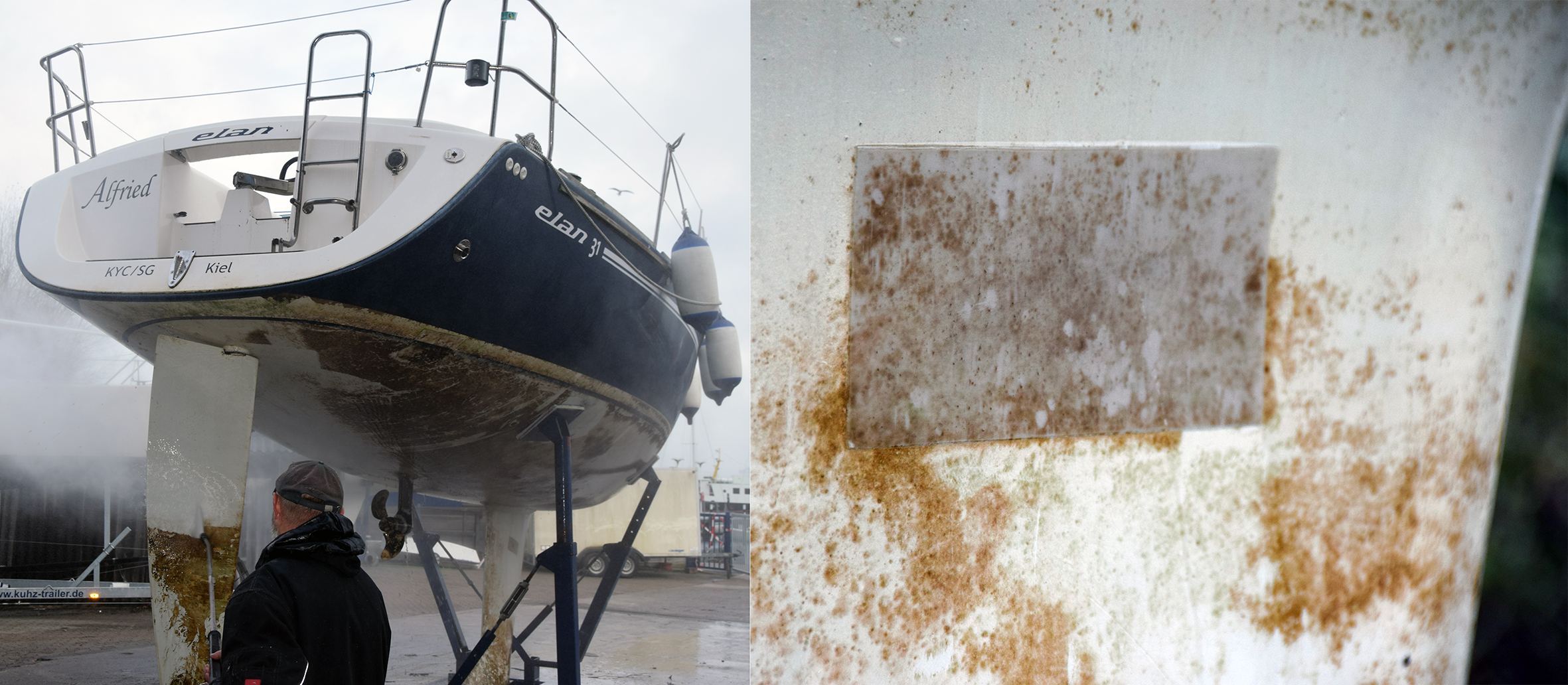Adhesion plays an important role in nature. Barnacles and mussels use complex adhesives to permanently settle on natural and man-made surfaces such as ship hulls or offshore facilities. In the long term, organisms can damage these surfaces and, for example, increase fuel consumption through greater flow resistance. Conventional methods to protect ship hulls against unwanted bio-fouling are often associated with environmentally harmful toxins. The first author of the study, Dennis Petersen and his colleagues Dr. Thomas Kleinteich, Prof. Dr. Stanislav Gorb and Dr. Lars Heepe from the Functional Morphology and Biomechanics working group at the Zoological Institute of Kiel University, are therefore looking for new ways to overcome the permanent growth of macro-fouling without toxic substances being introduced into the sea.
For the development of the new surface, the researchers first analyzed the wettability of the barnacle cement meaning the ability of the organisms to adhere to surfaces underwater and to spread their "cement" throughout the surface. The researchers have succeeded in understanding the physical process of wettability of barnacles and have developed strategies to fight it by introducing an appropriate surface microstructure. "Our research has shown that adhesives used by organisms that settle underwater can stick to almost any surface. The reason is the complex chemical composition of these adhesives. The aim of our research was therefore to develop a surface as universal as possible, which, based on physical principles, prevents the organisms from adhering permanently," says first author Dennis Petersen from the Zoological Institute of Kiel University.
Based on the new findings, the researchers have succeeded in developing a coating made of a non-toxic silicone with a new microstructure similar to that of a mushroom head. Similar to the lotus effect causing liquids to roll off smooth surfaces, the geometry of this new structure prevents a strong adhesive bond between barnacles or mussels with the newly developed coating surface. In a first practical test, parts of the hull of four sailing yachts of the Kiel Yacht Club were covered with the new material and tested for one season. The tests have proven: No barnacles or other macro-foulers such as mussels could be found on the new coating. The material also showed other positive characteristics. While barnacles on hard materials - such as metal or acrylic glass - break off bluntly during removal and leave their adhesive layer behind, they could be detached from this soft material without leaving any residue.
"With our findings we have taken a major step forward in the further development of new materials that can make a significant contribution to the reduction of bio-fouling," said Dr. Lars Heepe, co-author of the study and member of the Cluster of Excellence "The Future Ocean". "In addition to the technological relevance, our work also makes a fundamental contribution to the bio-mechanics of the adhesion of marine organisms. Underwater adhesion still remains a mystery to scientists. Only by comparing the overgrowth on different surfaces we are able to understand the process of adhesion of marine organisms. With this understanding, it will certainly be possible to develop further innovative strategies for a toxin-free reduction of bio-fouling," said Prof. Dr. Stanislav Gorb, co-author of the study and member of the Cluster of Excellence "The Future Ocean".
Original Work
Competing with barnacle cement: wetting resistance of a re-entrant surface reduces underwater adhesion of barnacles, Dennis S. Petersen, Thomas Kleinteich, Stanislav N. Gorb, Lars Heepe, J. R. Soc. Interface 2018 15 20180396; Published 22 August 2018,
http://dx.doi.org/10.1098/rsif.2018.0396
Links
https://www.uni-kiel.de/zoologie/gorb/topics.html (Working group Functional Morphology and Biomechanics)
www.futureocean.org (Cluster of Excellence „The Future Ocean")
Contact
Dr. Lars Heepe und Dennis Petersen
Functional Morphology and Biomechanics, Zoological Institute
Christian-Albrechts-Universität zu Kiel (CAU), Am Botanischen Garten 9, 24118 Kiel
Telephone: +49 431 880-4517
lheepe@zoologie.uni-kiel.de
dpetersen@zoologie.uni-kiel.de
Press contact
Friederike Balzereit
Public Outreach, Cluster of Excellence "The Future Ocean"
Telephone: +49 431 880-3032
fbalzereit@uv.uni-kiel.de
…
Press material
3-dimensional visualization of the surfaces of the micro-structured silicone surface (left) and the smooth control surface made of the same silicone (right). The control surface is much more heavily overgrown with barnacles.
Photo / Copyright: Lars Heepe/Dennis Petersen, Zoological Institute, Kiel University
Microscopic electron image of the micro-structured silicone surface.
Photo / Copyright: Lars Heepe, Zoological Institute, Kiel University
Barnacles on the micro-structured and flat silicone surface and a flat acrylic glass surface after about 17 weeks of exposure in the Baltic Sea.
Photo / Copyright: Lars Heepe/Dennis Petersen, Zoological Institute, Kiel University
Field test of the new silicone coating on a sailing yacht of the Kiel Yacht Club (left). A 30x10 cm strip of the foil was attached to the yacht at the beginning of the season in Kiel. At the end of the season no barnacles or other macro-foulers could be found (right).
Photo / Copyright: Lars Heepe/Dennis Petersen, Zoological Institute, Kiel University
